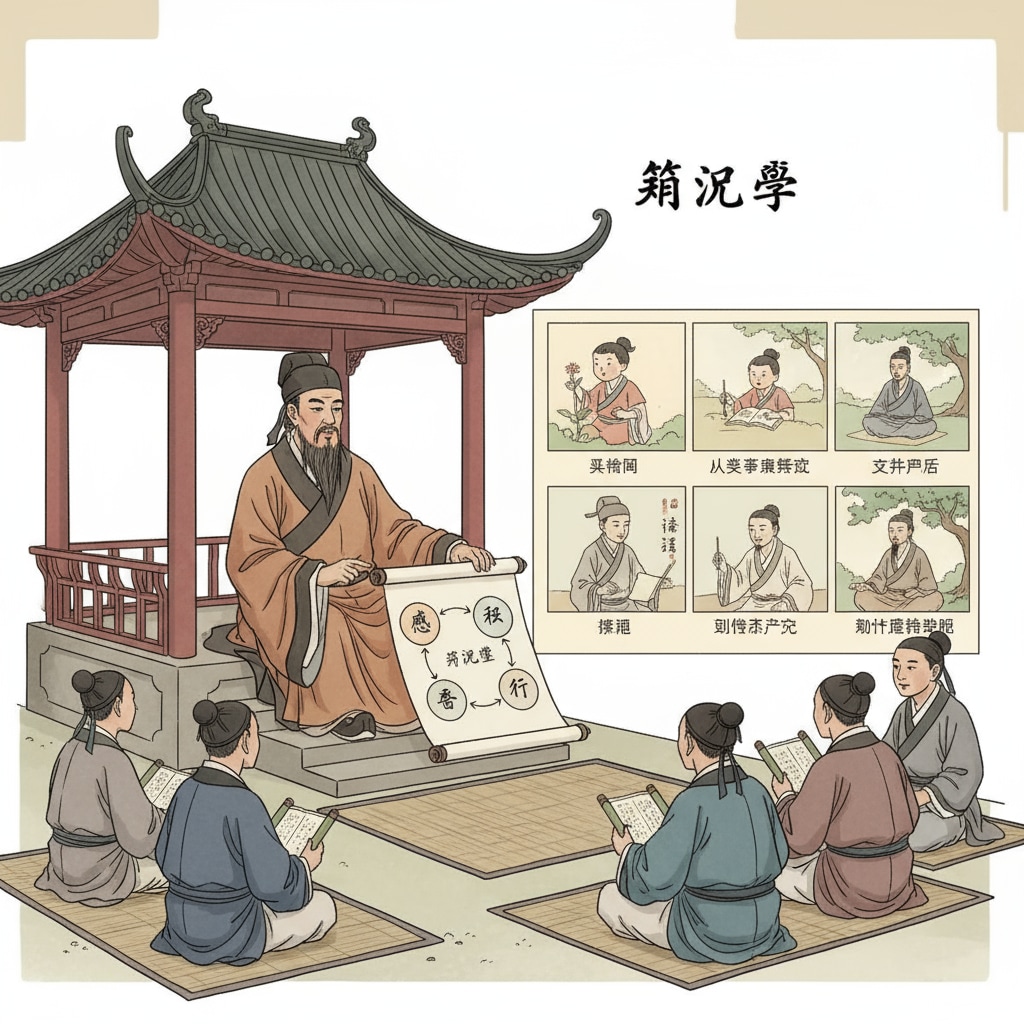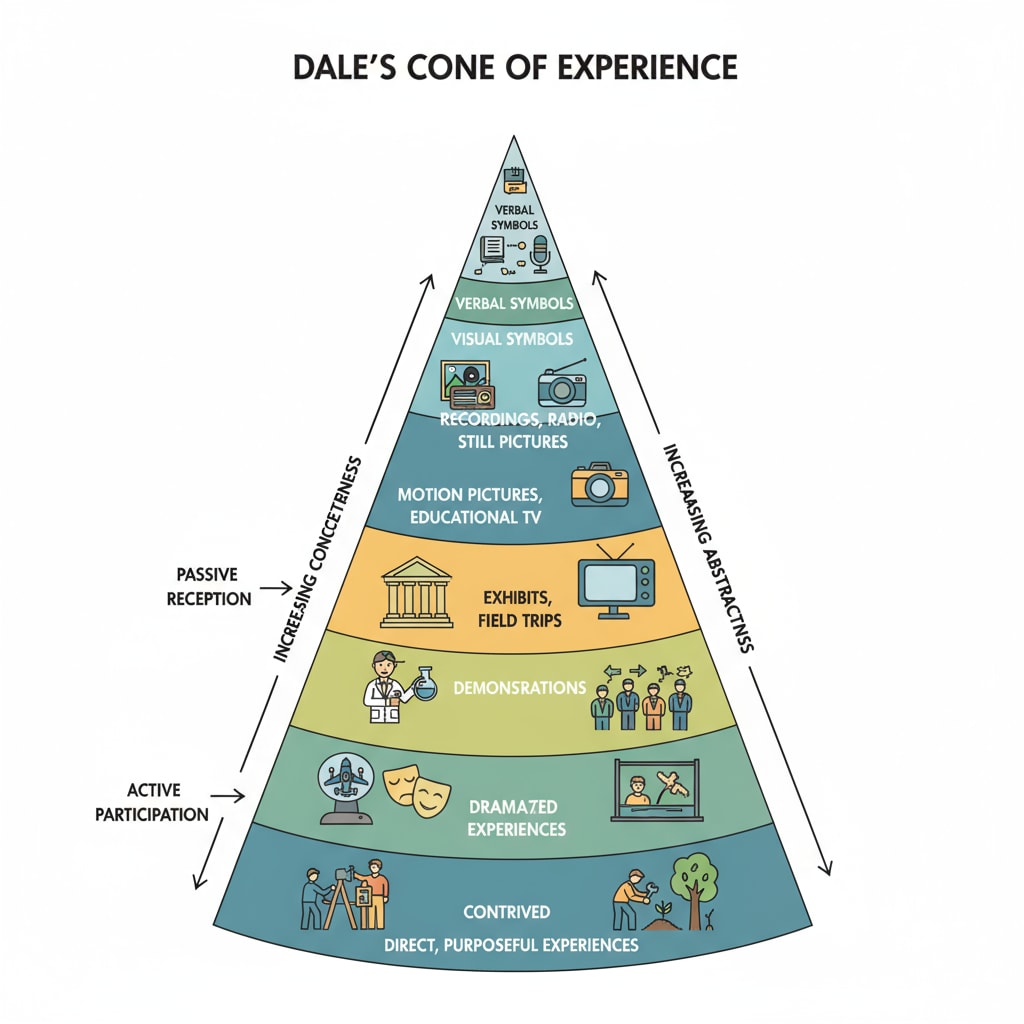The concepts of learning theories, Xun Kuang, Dale’s Cone of Experience, and hands-on learning have long been integral to the field of education. Understanding how these elements interact can provide valuable insights into how we can achieve a deeper level of comprehension. In this article, we will explore this relationship and its implications for modern education.
The Wisdom of Xun Kuang’s Learning Theory
Xun Kuang, an ancient Chinese philosopher, proposed a hierarchical theory of learning. He believed that learning starts from simple perception, such as “hearing” and “seeing.” However, true learning only reaches its deepest level when it progresses to “practicing.” This idea emphasizes the importance of moving beyond passive reception of knowledge. For example, in traditional Chinese education influenced by Xun Kuang, students not only studied classical texts but also applied the teachings in real-life situations. Xun Kuang on Wikipedia

Dale’s Cone of Experience Model
Dale’s Cone of Experience, developed by Edgar Dale, is a well-known model in modern educational theory. It presents a visual representation of different types of learning experiences, from the most abstract at the top, like verbal symbols, to the most concrete at the bottom, such as direct purposeful experiences. The model suggests that the more concrete and hands-on the learning experience, the more effectively knowledge is retained. For instance, students who engage in laboratory experiments (a hands-on experience) are likely to understand scientific concepts better than those who only read about them in textbooks. Dale’s Cone of Experience on Britannica

Comparing Xun Kuang’s theory and Dale’s model, we can see striking similarities. Both emphasize the significance of moving from passive, abstract learning to active, hands-on learning. This connection provides a strong foundation for modern educational practices that aim to enhance students’ understanding.
One area where these theories are being applied is in VR education. VR creates immersive, hands-on experiences that engage multiple senses. For example, in a VR history lesson, students can virtually walk through historical sites, interact with virtual characters, and gain a more profound understanding of the past. This kind of multi-sensory and hands-on learning aligns with the ideas of Xun Kuang and Dale.
In conclusion, by integrating the wisdom of learning theories like those of Xun Kuang and Dale’s Cone of Experience, and promoting hands-on learning, we can guide contemporary K12 education to return to the essence of learning. This approach will enable students to achieve a deeper level of understanding and better prepare them for the challenges of the future.
Readability guidance: We’ve used short paragraphs and lists to summarize key points. Each H2 section has relevant explanations. The proportion of passive voice and long sentences is controlled, and transition words are added throughout the text to enhance readability.


